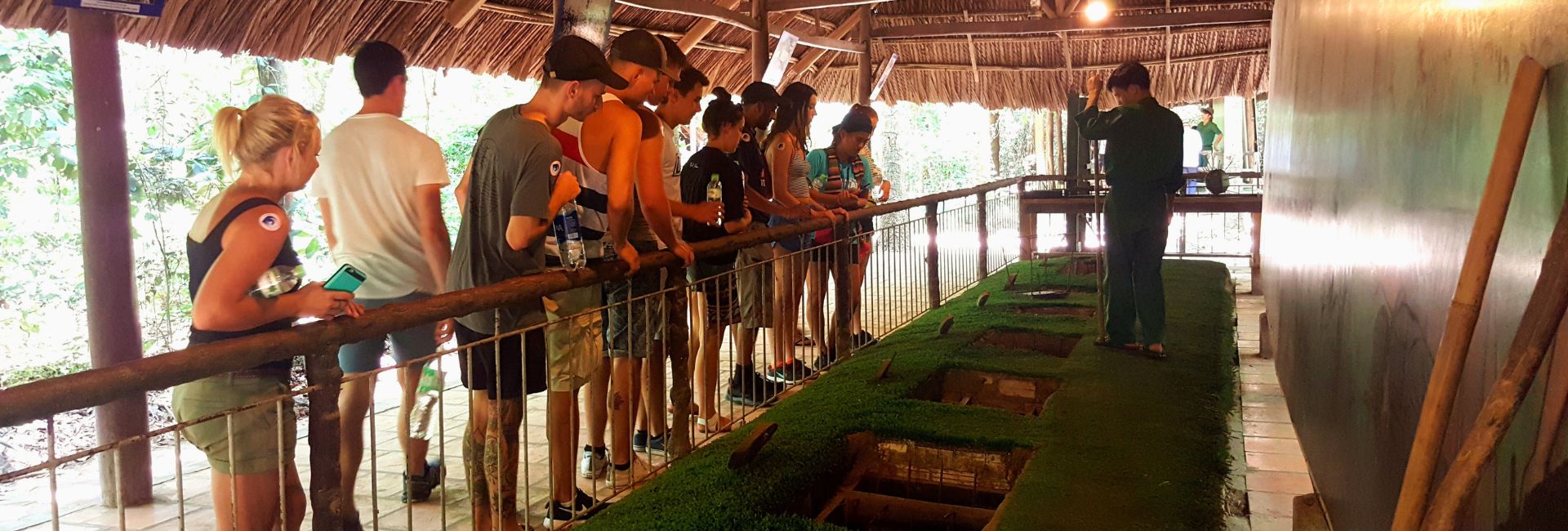The Cu Chi Tunnels stand as a remarkable testament to human ingenuity and resilience during one of history’s most challenging periods. Located just outside Ho Chi Minh City (formerly Saigon), these underground passages offer visitors an unforgettable glimpse into Vietnam’s wartime history and the extraordinary lengths people will go to defend their homeland. This travel blog will give you all the information you need to plan your perfect Cu Chi Tunnel tour.
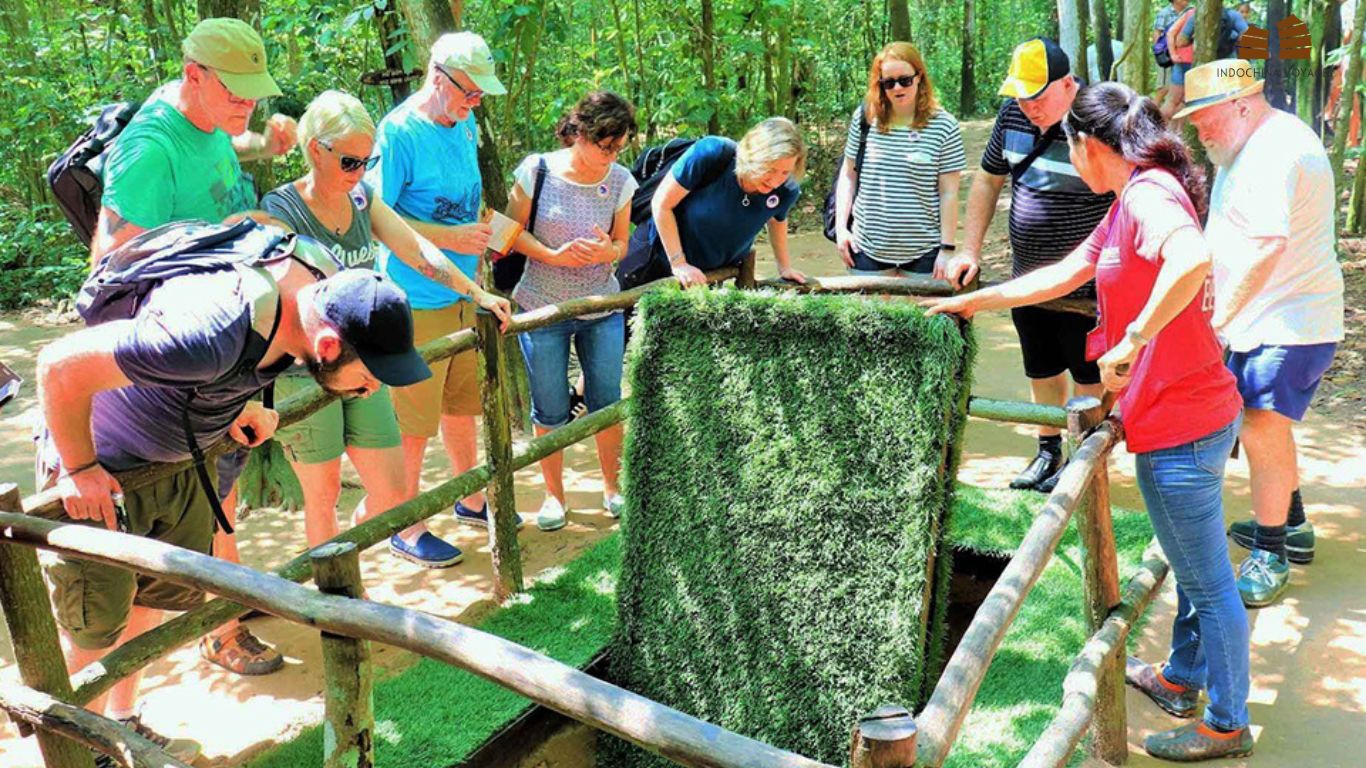
Get to know about Cu Chi Tunnel
Deep beneath the earth’s surface lies an intricate network of tunnels that played a pivotal role in Vietnam’s military strategy during the war. This underground maze, spanning over 120 kilometers, served as a hidden city where thousands lived, fought, and survived in unimaginably challenging conditions.
The tunnels, now a popular tourist destination, represent one of the most innovative military installations in warfare history. They showcase the remarkable engineering capabilities of the Vietnamese people who created this subterranean network using simple tools and sheer determination.
What makes a Cu Chi Tunnel tour special?
- Experience firsthand the ingenious military architecture with multi-level tunnel systems
- Crawl through actual wartime tunnels (now enlarged for tourist safety)
- View authentic weapons, traps, and military equipment from the era
- Learn about survival techniques used by tunnel residents
- Sample traditional wartime food like tapioca root
- Witness live demonstrations of tunnel concealment techniques
- Experience the challenging conditions soldiers faced underground
- See original command centers and meeting rooms preserved from the war
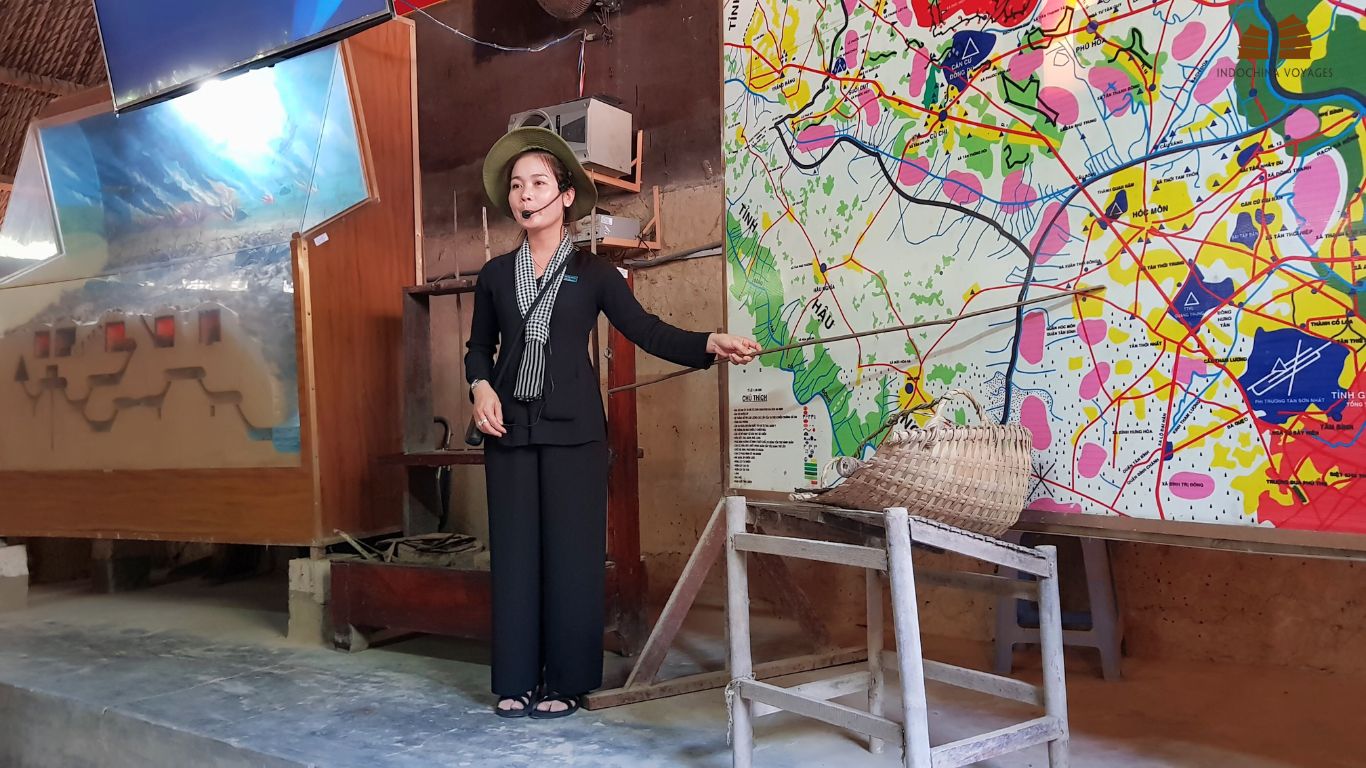
The History
The Cu Chi Tunnel network began its life in the late 1940s as a modest underground system dug by the Viet Cong. What started as simple communication routes evolved into an underground city that would change the course of history.
The network expanded to include multiple levels reaching depths of up to 12 meters. The first floor began at 3 meters underground, the second at 6 meters, and the third at an impressive 12 meters deep. Within these depths, the Viet Cong created a complete underground society, including living quarters, offices, kitchens, hospitals, and even music halls for entertainment and morale boosting.
The human cost was devastating – approximately 45,000 Vietnamese lost their lives defending these tunnels between 1966 and 1968 alone, during intense U.S. attempts to neutralize the network. Today, 121 kilometers of these tunnels are preserved by the Vietnamese government, with certain sections modified to provide safe access for visitors.
What can you expect in a Cu Chi Tunnel tour?
The Iron Triangle
The Cu Chi district earned its strategic importance as the Viet Cong’s primary command center near Saigon. The tunnel network’s significance went far beyond its role as mere shelter – it became the heart of the resistance movement’s operations.
In an ironic twist of military history, U.S. forces unknowingly established their base directly above this underground network. This strategic error inadvertently provided the Viet Cong with unprecedented access to supplies and intelligence. While the U.S. military possessed superior firepower and resources, the Viet Cong’s intimate knowledge of the tunnel system and guerrilla warfare tactics proved to be a powerful equalizer.
The local fighters, many of whom were farmers by trade, transformed into formidable opponents through their mastery of underground warfare. Their ability to appear and disappear at will, conduct swift night raids, and set elaborate traps made them an elusive and effective force against conventionally superior military powers.
The art of concealment of the Viet Cong
The Viet Cong’s mastery of concealment was perhaps their greatest tactical advantage. Their ingenuity in hiding the tunnel entrances was remarkable – each entrance was carefully disguised and protected by cleverly constructed booby traps. The entrances were deliberately designed to accommodate only people of smaller stature, making it nearly impossible for larger soldiers to enter.
The designers incorporated sophisticated engineering features, including triangular layout patterns that allowed occupants to escape through alternative exits when under attack. They even developed innovative solutions to counter enemy tactics – when U.S. forces attempted to flood or gas the tunnels, the advanced drainage systems and strategic design prevented these methods from being effective.
The Viet Cong’s attention to detail extended to psychological warfare. They cleverly used captured American supplies, including soap and clothing, to confuse tracking dogs by masking their scent with familiar odors. These tactics, combined with their superior knowledge of the tunnel system, allowed them to maintain their underground advantage throughout the conflict.
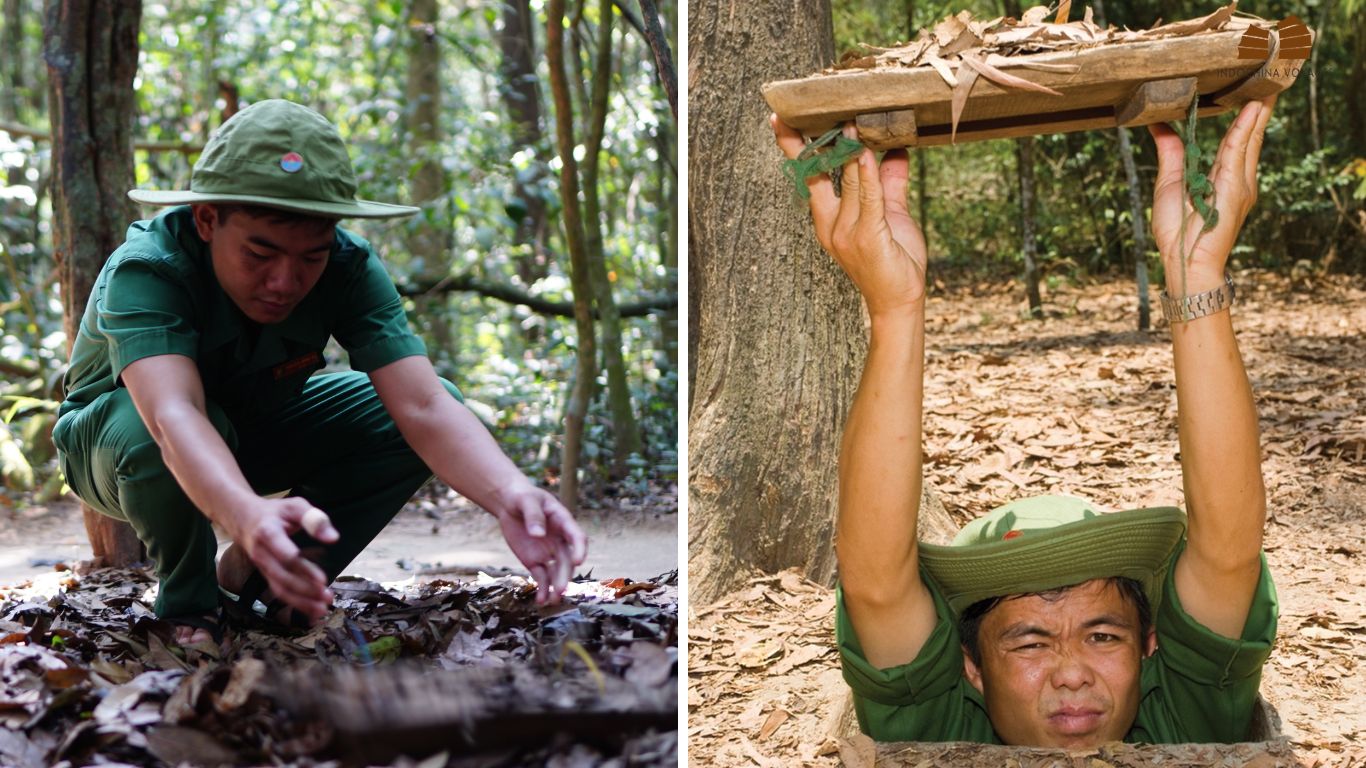
Learn and experience life underground during war
The Cu Chi tunnels were more than just a military installation – they were a complete underground civilization that housed over 16,000 people. This remarkable subterranean network showcased the incredible adaptability of its inhabitants, who created functioning communities despite severe limitations.
The tunnel dwellers demonstrated remarkable resourcefulness in their daily survival. They repurposed American bombs for ammunition, crafted weapons from bamboo, and even solved their ventilation challenges by utilizing termite mounds as natural air vents – a clever solution that confused American forces for years who searched in vain for larger air outlets.
Life in the tunnels was extraordinarily challenging. Soldiers faced constant threats from diseases, particularly malaria and skin conditions. The tunnels were home to various dangerous creatures, from venomous insects to vermin. Despite these hardships, the network proved invaluable to the Vietnamese resistance effort.
Today, visitors can explore the Ben Dinh section of the Cu Chi tunnels, which has been carefully preserved and modified for tourism. While the tunnels have been widened to accommodate modern visitors, they still provide an authentic sense of the cramped conditions endured by the original inhabitants.
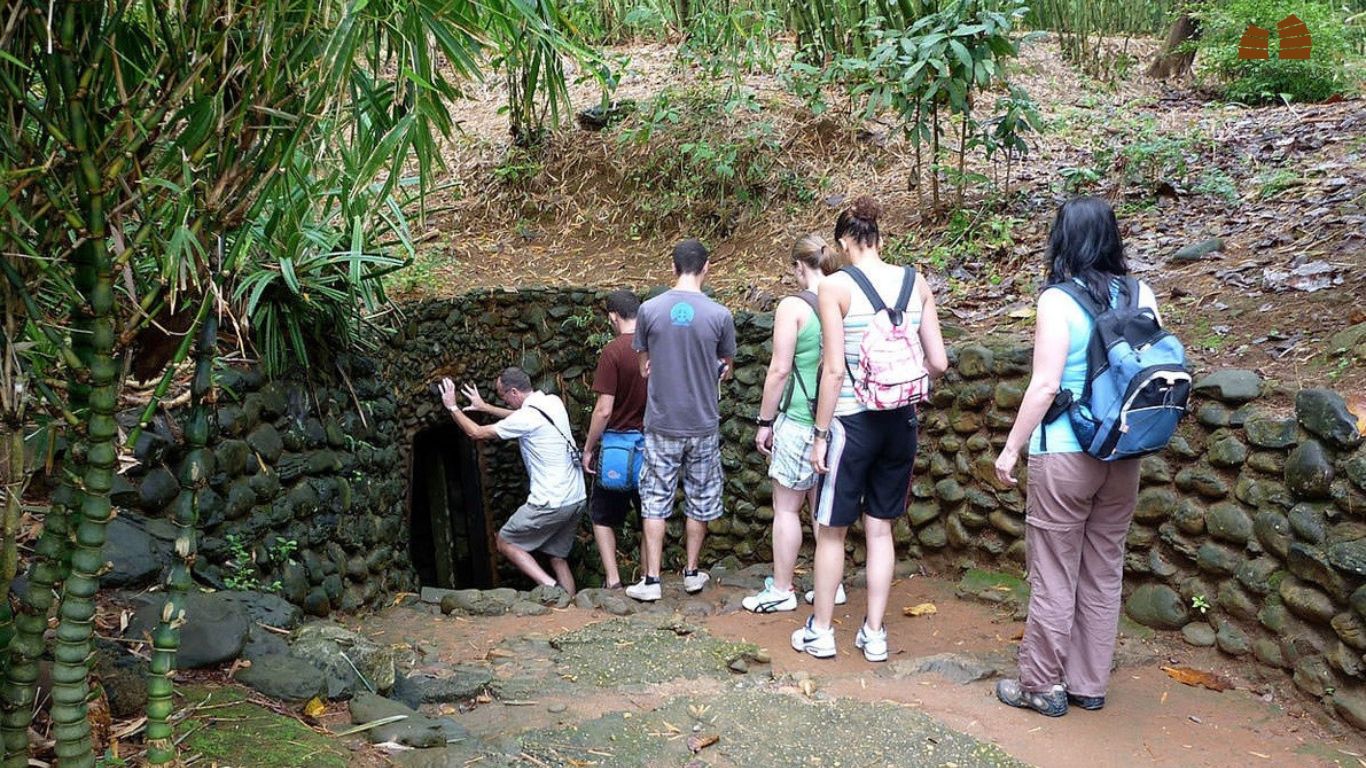
The Ben Dinh section tour takes you through various underground facilities including:
- Surgery rooms where medical procedures were performed
- Communal kitchens that fed thousands
- Meeting rooms for strategic planning
- Classrooms where education continued despite the war
- Tool-making workshops and ammunition storage
For those seeking an even more authentic experience, the Ben Duoc tunnels offer a less touristic alternative. These tunnels remain closer to their original size and have undergone minimal reconstruction, providing a more realistic glimpse into wartime conditions.
However, the story of Cu Chi tunnels isn’t just about military ingenuity – it’s also a sobering reminder of war’s human cost. Many tunnel veterans suffered severe health consequences from years of underground living, including vision loss, hearing impairment, and chronic health issues. While the tunnels stand as a testament to human resilience and resourcefulness, they also serve as a powerful memorial to the sacrifices made by those who lived within their confines.
Helpful information for travelers
Opening hours and admission fees
The Cu Chi Tunnels welcome visitors daily from 7:00 AM to 5:00 PM. Admission tickets cost 110,000 VND (approximately $4.50 USD) for adults and 55,000 VND for children under 12.
The shooting range, if you want to try firing historic weapons, requires a separate fee starting at 300,000 VND for 10 bullets.
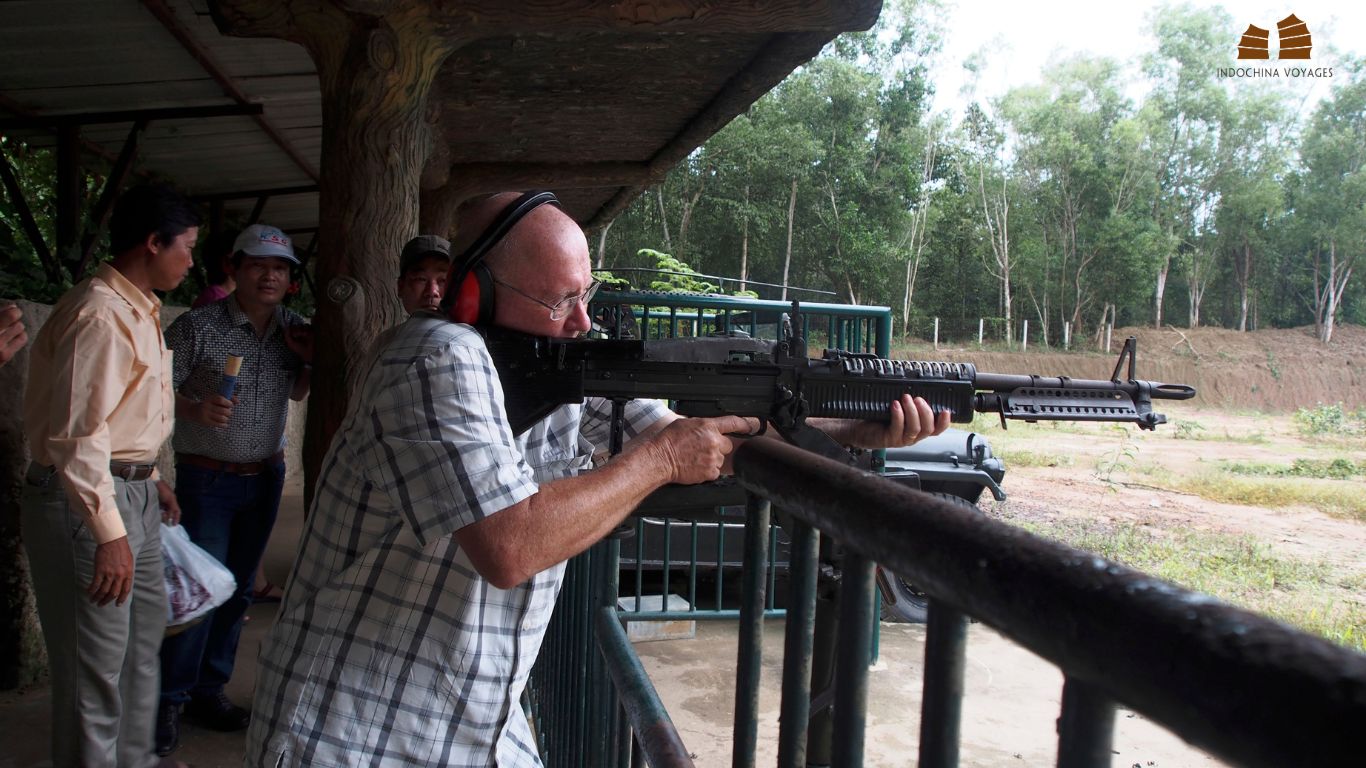
Duration
It does not take much time to visit the Cu Chi Tunnels (usually half a day excluding travelling time); however, it is worth every moment to visit this wartime iconic symbol. You can have the opportunity to experience what lengths Vietnamese people went through during the French and the U.S. wars.
Best times to visit and avoid tourist traps
Visit early in the morning (before 9:00 AM) or late afternoon (after 2:00 PM) to avoid large tour groups and enjoy cooler temperatures. The site gets very crowded between 10:00 AM and 1:00 PM when most tour buses arrive.
Skip the overpriced snacks and souvenirs at the tourist center. You’ll find better prices for similar items in Ho Chi Minh City.
How to get there?
You have several options to reach the Cu Chi Tunnels:
Private Tour: The easiest way – costs around $40-50 USD per person, includes transportation and guide. You can check out this Southern Vietnam Discovery 6 Days with the highlight of south Vietnam including Cu Chi tunnel tour.
Taxi: Costs about $30-40 USD one way, takes 1-1.5 hours.
Public Bus (cheapest option):
- Take Bus #13 from Ben Thanh Market to Cu Chi Bus Station
- Transfer to Bus #79 to the tunnels
- Total cost: around 20,000 VND ($0.80 USD)
- Journey time: 2-3 hours each way
Extra Travel Tips
- Wear comfortable clothes and sturdy shoes – you’ll be walking and crawling
- Bring a small towel – the tunnels can get hot and sweaty
- Carry water – the site has shops but prices are high
- Use mosquito repellent – the area has lots of insects
- Book a morning tour if you’re visiting in summer – afternoons get very hot
- Plan for 2-3 hours to see everything properly
- Take a guide – they know secret spots and share interesting stories
- Bring cash – some places don’t accept cards
- Choose Ben Duoc tunnels for fewer tourists and more authentic experience
- Visit the bathroom before entering the tunnels – there aren’t any inside
- Keep your entrance ticket – you’ll need it to exit
Luxury Cruise Mekong hopes this travel blog will be your comprehensive guide for your Cu Chi Tunnel tour near Ho Chi Minh City. Whether you’re interested in Vietnam’s wartime history or looking for a unique travel experience, this detailed guide covers the tunnels’ past, present, and everything you need to know for a meaningful visit.
Mo Nguyen – from Luxury Cruise Mekong

